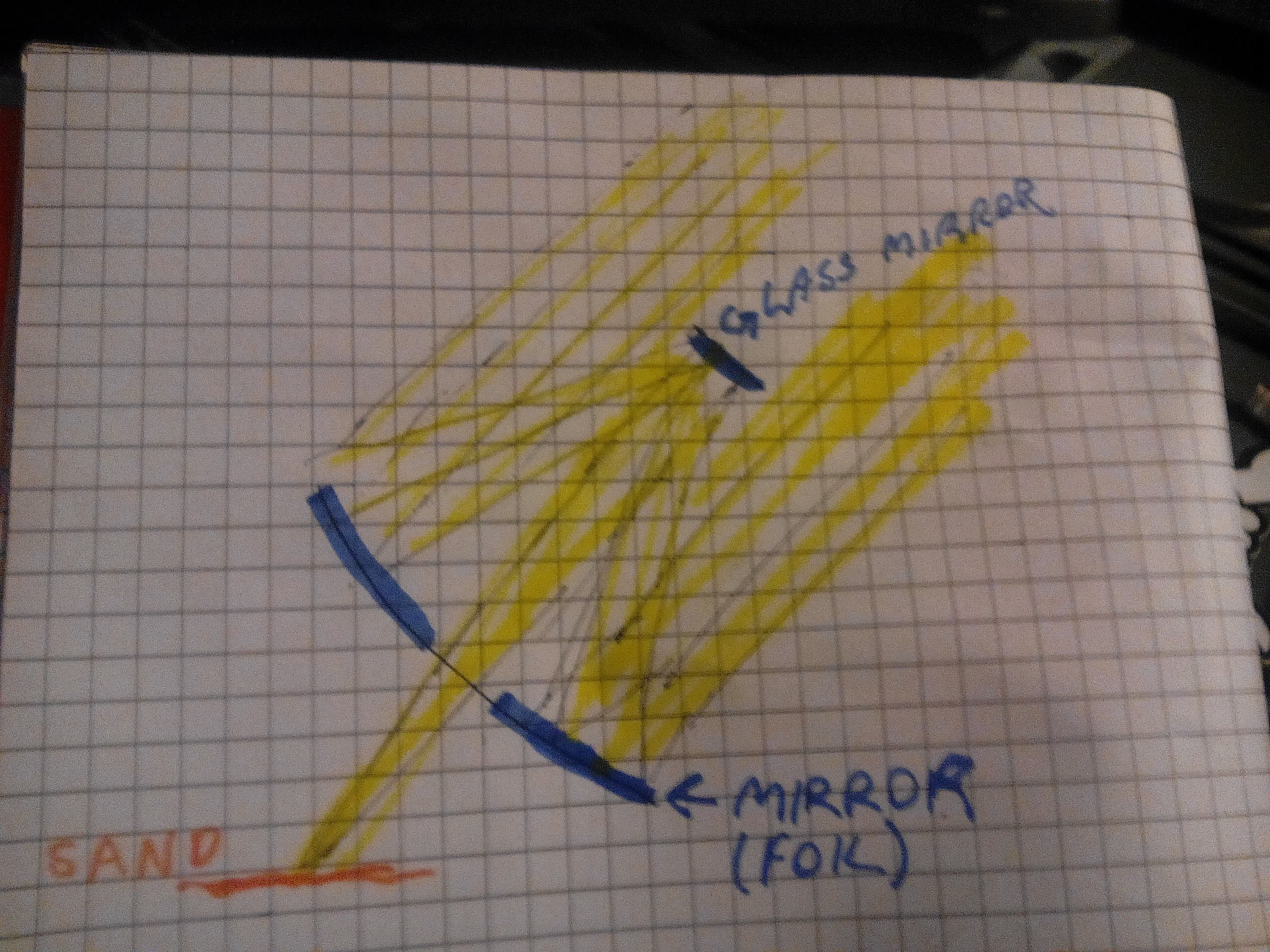-
Wired Video about illegal sand mining
06/22/2015 at 14:08 • 0 comments -
Some Maths
06/02/2015 at 14:24 • 0 commentsSo according to wikipedia "The reflectivity of bright aluminum foil is 88% while dull embossed foil is about 80%", this is far better than I thought. Markus Kaysers SolarSinter Project, appeared to use 4 lenses of about 6ft x 4ft total area, while I doubt these are focusing all available light, I am going to assume 100% efficiency for his design, as any increase of power for me will be a bonus.
So I will assume that Markus design is 120cm x 180cm for a total of 21600cm^2 of light collecting area. At 80% efficiency i will need 27000cm^2 of light collecting area, or more if i need to.
So I plan on using a 200cm x 200cm square reflector, and loosing 20% for the focusing mirror, so 40000cm2 - 20% = 32000cm2 light collecting area.
Assuming Markus design is running at 100% and my own is 80%, this should give me at least 18.5% more power.
-
Total Re-Think
05/27/2015 at 20:50 • 0 commentsThe lens I bought was awful. Its focal point was too close to the surface, so I couldn't use multiples along side, and large lenses were prohibitively expensive. This has to be repeatable, and rear projection tv's never really took off in the uk, and i suspect not in the target countries either. So plan B......
(PS, I'm not 5, that just my handwriting)
So the idea is to use conventional foil to make a parabolic mirror in the style of a reflector telescope. The cost benefit should outweigh the loss of light and this could be made from a light wood frame , some papier-mache and a conventional mirror (and math of course)
-
Waiting + Call for advice
04/28/2015 at 13:14 • 5 commentsSo I have my lenses shipping from China, but I am struggling to find a non contact thermometer that can go to 2-3000'C. Anyone know of something that will be suitable under £30?
The first stage will be a scale model, melting something at lower temps. Will update when i have something to show.
EDIT. Lens arrived from the UK, and i have set up #Measuring Extreme Temperatures to estimate the tempratures reached.
Solar Sand Converter - Solving the sand problem
Convert desert sand in to construction sand to make up for the massive shortfall in supply.
 haydn jones
haydn jones